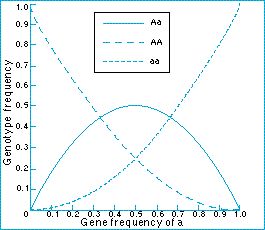The theory of natural selection (part 2) - What are the effects of population subdivisions?

The Wahlund effect
In large populations which contain sub-populations there are fewer homozygotes than in the average for the set of subdivided populations. This is a general, and mathematically automatic, result. The increased frequency of homozygotes in subdivided populations is called the Wahlund effect. This effect has a number of important consequences.
• We have to know about the structure of a population when applying the Hardy-Weinberg principle to it, otherwise there may seem to be more homozygotes than expected from the Hardy-Weinberg principle. We might then suspect that selection, or some other factor, was favoring homozygotes. In fact both subpopulations are in perfectly good Hardy-Weinberg equilibrium and the deviation is due to the unwitting pooling of the separate populations.
• A second consequence of the Wahlund effect is that when a number of previously subdivided populations merge together, the frequency of homozygotes will decrease. In humans, this can lead to a decrease in the incidence of rare recessive genetic diseases when a previously isolated population comes into contact with a larger population. The recessive disease is only expressed in the homozygous condition, and when the two populations start to interbreed, the frequency of those homozygotes goes down.
Figure: Hardy-Weinberg proportions of genotypes AA, Aa and aa in relation to the frequency of the gene a. This can be disturbed by the Wahlund effect.
| Next |



